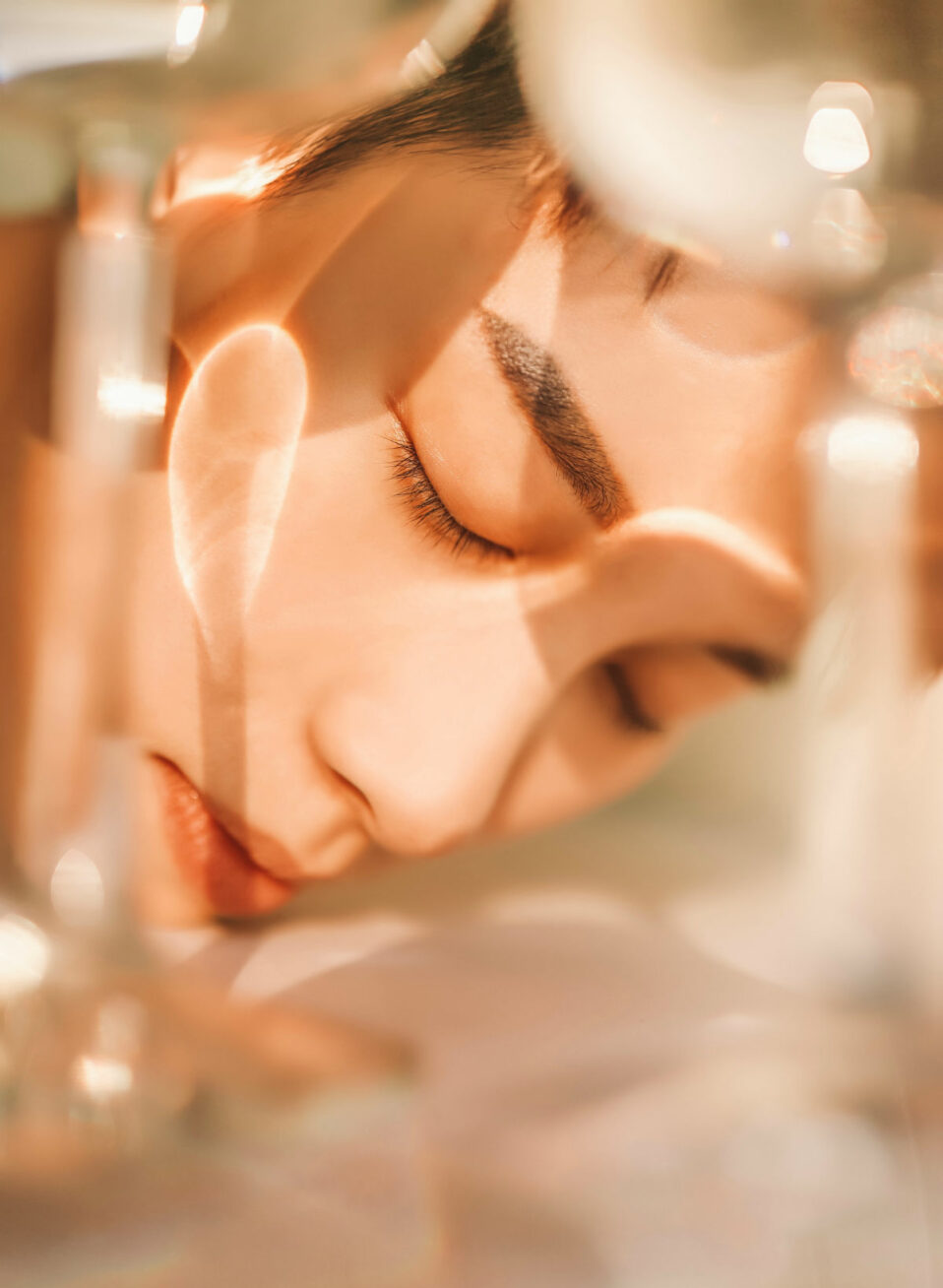Focus on skin pigmentation

Each skin type has its own characteristics. Skin tone, reaction to the sun and the way in which the skin copes with natural ageing are all variable. Understanding skin pigmentation makes it easier to identify skin-related conditions and to guide you towards appropriate treatments.
What is skin pigmentation ?
The skin has a natural colour that does not depend on its exposure to the sun. This colour depends on melanocytes, the cells that produce the natural pigments called melanin.
Each pigmentation results from the combination of two kinds of melanin, namely pheomelanins and eumelanins, which are produced in varying proportions. When the natural colour of the skin is light, pheomelanins are produced in abundance. The same applies to naturally red-haired individuals. This type of pigment offers no protection against ultraviolet light. When the skin colour varies from brown to black, it means that the cells produce a majority of eumelanins, pigments that protect against ultraviolet light.
Skin pigmentation: how it works
The pigmentation phenomenon is based on the reaction of skin cells to the action of certain biological mediators. The availability of melanocytes leads to the synthesis of melanin which is distributed throughout the different layers of the epidermis.
The renewal of the skin cells allows the melanin to rise to the surface and therefore to tint the skin evenly.
What can be the different problems linked to skin pigmentation ?
Sometimes the pigmentation cycle does not proceed correctly, which results in the lack of homogeneity of the natural colour of the skin. Hyperpigmentation is the most common phenomenon. It results in the appearance of brown spots (lentigos), usually in the form of circular patches of widely varying diameter.
Intensive exposure to the sun’s ultraviolet rays is the main cause of hyperpigmentation. The cells produce melanin continuously and the normal proportions of pheomelanins/eumelanins are no longer maintained. People who work outdoors, who do not protect themselves sufficiently or not at all against UV rays are the main ones affected. Lentigos appear on the most exposed areas such as the face, neck, arms and hands.
Hyperpigmentation can also result from the natural ageing of the skin. People with a fair complexion are more affected, especially from the age of 50.
Hyperpigmentation is a pathology that can have hormonal causes (pregnancy, contraception, etc.). In this case, it tends to disappear when hormone secretion returns to balance.
Other factors such as cosmetic and/or pharmaceutical active ingredients from photosensitive plants, mechanical rubbing or the consequences of skin irritation/inflammation can also cause hyperpigmentation.
It should also be noted that the skin can also be depigmented. These are not dark spots but lighter spots on the surface of the epidermis. This condition is most often due to excessive production of pheomelanins as a result of excessive UV exposure. Hypopigmentation can also result from burns or genetic causes such as atopic dermatitis and vitiligo, among others.
Focus on the company Phenocell
PHENOCELL is a CRO, i.e. a contract research organisation. Based in Grasse, it focuses its work on ophthalmology and dermatology. The preclinical research exploits new technologies, in particular the reproduction of cells in vitro, which makes it possible to multiply trials leading to tailor-made treatment protocols.
The technology used is among the most advanced. Indeed, Phenocell offers individual solutions to each pathology it studies. The company develops targeted protocols to solve skin problems while preserving the pigmentation process.
The role Phenocell’s technology can play in acne
On the dermatological side, Phenocell does not only focus on skin pigmentation problems. The CRO also devotes part of its research to a common and often disabling phenomenon: acne. Worldwide, approximately 80% of young people between the ages of 11 and 30 and about 40% of the adult population are affected by acne breakouts.
Pimples and redness appear on the surface of the skin when the pores are clogged with sebum. Bacteria and dead skin cells that are not removed can also cause pores to become clogged and thus promote acne. Environmental and genetic causes are the most common, but in some cases it is essential to adopt tailor-made treatments.
In response to these specific needs, Phenocell has developed a protocol based on sebocyte production. Numerous biological tests have already been carried out to observe and understand seborrheic dysfunction. However, studies are continuing with a view to multiplying the associated solutions and thus offering individualised treatments.
90% of the companies that have conducted active ingredient tests with Phenocell are satisfied with the results obtained.
Cosmetic and dermatological treatments must take into account the pigmentation of the skin to be effective. Biotechnology specialists are therefore working on research to ensure that this key element is respected.
